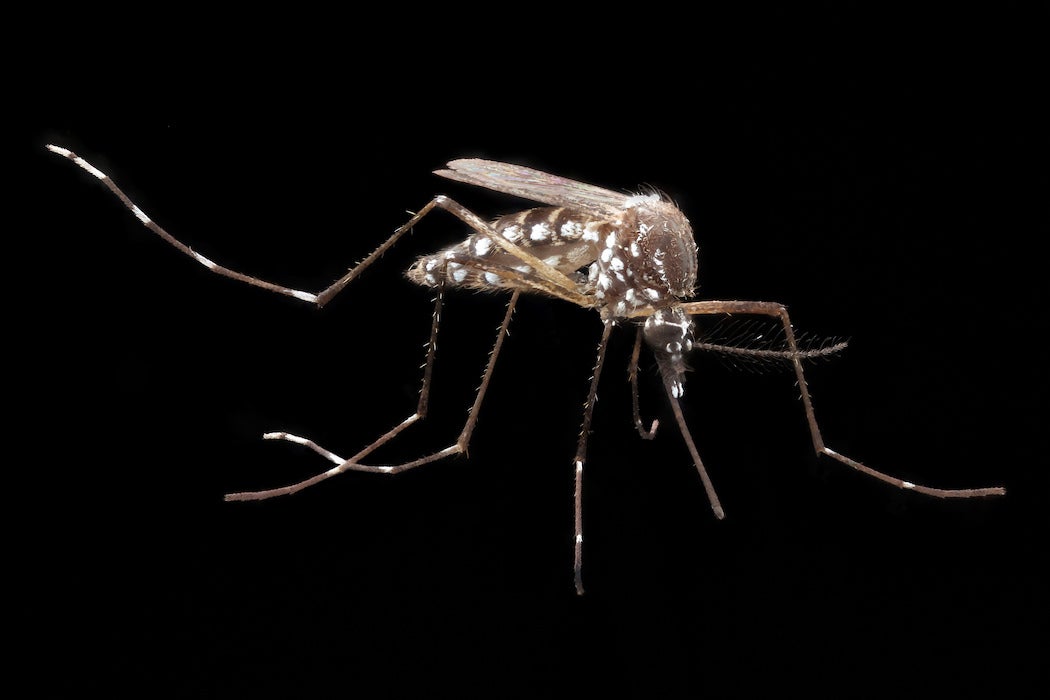In July of 2017, the Fresno Debug Project began work on an ambitious goal: eliminating the invasive Aedes aegypti mosquito population, responsible for the spread of Zika and Dengue Fever, in Fresno, California. Because extermination efforts have largely failed in the past, the scientists decided to curtail the population by interfering with reproductive cycles. That is, they decided to sterilize these mosquitoes.
First, they needed a mosquito sterilization technique that could be deployed on a massive scale. So they turned to nature, the world’s finest engineer, and selected the Wolbachia bacteria, a naturally-occurring infection that effectively renders these mosquitoes infertile. To breed millions of Wolbachia-infected mosquitoes, the Debug Team created an automated rearing process that separates males from females. Because male mosquitoes lack the physiology to bite and spread disease, they pose no threat to humans and can be released without causing any harm. The hope is that these sterile males will infiltrate the mating pool, replacing some fertile males as mates. And because female mosquitoes usually mate only once in their lifetimes, every instance of a Wolbachia-infected male mating with a female should make a small dent in the population. Rear, release, and repeat.
On a large scale, this project could be extremely successful in promoting public health. Its ecological impact is expected to be negligible, because, as an invasive species, Aedes aegypti mosquitoes aren’t an important food source. But from a philosophical standpoint, there’s something distinctly creepy about sterilizing an entire population, even one of Zika-carrying bugs. If we are able to perfect this capability, should we feel moral qualms about editing out certain organisms?
Intuitively, it seems like we wouldn’t really want to eradicate any living species, even the annoying and the dangerous ones. We worry over the endangered status of the northern white rhino, for instance, not because of their contributions to the world, but because as life-forms, they have inherent worth. But does that value derive from the particular kind of animal they are? Or is it simply based on the fact that they are living creatures? In other words, are we speciesist? Or do we think that biodiversity is an intrinsic good?
Debates about the moral value of biodiversity are longstanding in the world of environmental ethics, and the issue is far from settled. The philosopher Markku Oksanen, for example, has outlined three main positions: anthropocentrism, biocentrism, and ecocentrism. Surprisingly, none of these dominant schools of thought regards biodiversity as an intrinsic good. Rather, they treat biodiversity as a good because of its value to humans, to non-human animals, or to the larger ecosystem, respectively.
But in practice, we act as if preserving biodiversity is a desirable end in itself. While the Fresno Debug Project provides an example of human intervention to cull a species, many efforts run in the opposite direction, working to ensure that a species survives. Perhaps the most dramatic example is the revival of the California Condor. In “Biography of a ‘Feathered Pig’: The California Condor Controversy,” the environmental historian Peter S. Alagona details the immense operation that saved the species. By the time aggressive conservation efforts finally were enacted to save the bird, it was clear that losing the last few condors wouldn’t have much of an ecological impact. Nor did the condor population play an important role in the lives of people or non-human animals. We poured resources into the effort just because we wanted to keep the condor around. And I’m really glad we saved the California condor. I’ve never even seen one, and I likely never will, but it’s nice to know that it’s out there.
Another way to reflect on the value of biodiversity is to imagine a world without it. In his celebrated story Do Androids Dream of Electric Sheep?, the novelist Philip K. Dick does just that. In the world of the novel, one ravaged by nuclear weapons, the defining attribute of the human psyche is an obsession with living creatures (a theme entirely ignored in Blade Runner, which is based on the book). The literary environmentalist Ursula K. Heise notices that Dick seems to be taking a powerful stance on authentic humanness, suggesting that it’s defined by “biophilia.”
This is a profound observation about a novel that is typically lauded for its contribution to robot lore. At a fundamental level, Heise argues, the book is about the importance of preserving life in all forms so that you don’t need to conjure up a facsimile of it. In Dick’s world, starved of biodiversity, the innate value of animal life is apparent. To find an Aedes aegypti mosquito in this world would be a great blessing. In our world, would their extinction be a tragedy?







